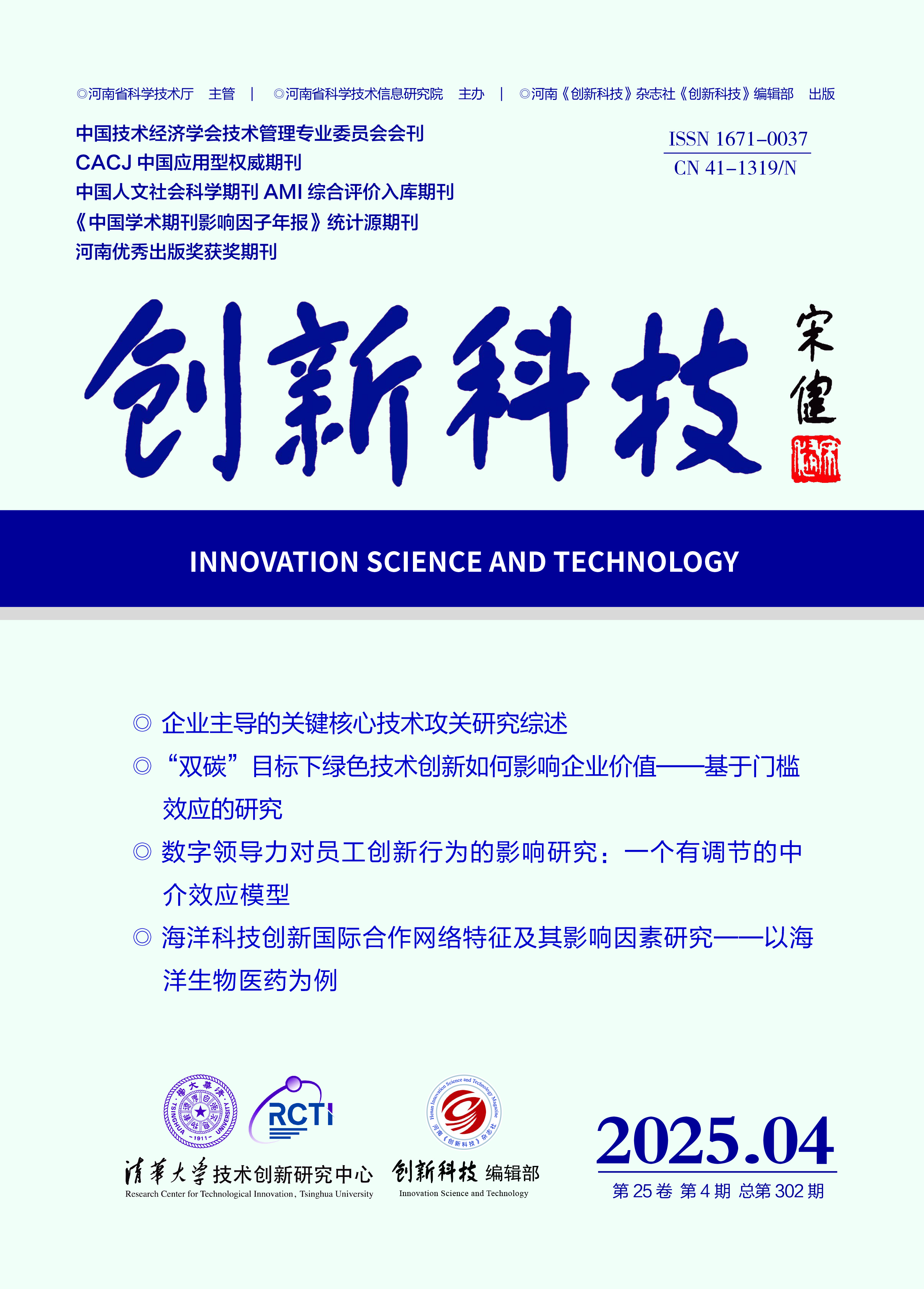INNOVATION SCIENCE AND TECHNOLOGY
Quick Search

All publication are peer-review
Peer review will take the from of double-blind review Judge objectively and impartially
There is no conflict of interest for the reviewer
Review articles shall be kept strictly confidential prior to publication
Science & Technology Strategy and Policy
Research on the Digital Platform Construction for Think Tank in China from the Perspective of Unleashing the Value of Data Elements
—Based on Three Typical Case Studies
Wei Ying, Zhou Yuan, Wang Yinfang, Ren Zhu
(Tianjin Academy of Science and Technology for Development, Tianjin 300171, China)
Abstract: The construction of digital platforms for think tanks is of great significance for multiplying the value of data elements, supporting the high-quality development of think tanks, and building competitive advantages in the digital economy era. This paper examines three repre⁃ sentative domestic cases, namely, China Knowledge Centre for Engineering Sciences and Tech⁃ nology, Knowledge Service Platform for Chinese Academy of Sciences, Guangdong Think Tank Information Platform. Through literature research, case studies, and comparative analysis, we ex⁃plore their practical experiences and characteristics in three major areas: resource construction, service functions, and communication and sharing. Specifically, the study focuses on 15 dimen⁃ sions: total resources, data sources, resource domains, resource collaboration, unique resources, resource classification, data governance, retrieval functions, utilization functions, analysis func⁃ tions, methodological tools, proactive services, communication matrices, interactive feedback, and collaborative sharing. The research indicates the following: ①Commonalities: In terms of data resource construction, the platforms share several characteristics such as comprehensive and diverse data sources, an emphasis on thematic and specialized resources, the development of expert networks, and a focus on data governance. In terms of service functions, they mainly pro⁃ vide functions such as one-stop retrieval, data utilization, data analysis, integration of tools and methods, and proactive knowledge services. In terms of communication and sharing, the plat⁃ forms focus on enhancing the dissemination effectiveness and user stickiness by creating a dis⁃ semination matrix, facilitating interactive feedback, and promoting collaborative sharing. ②Dif⁃ ferences: Think tanks of various types have different priorities when planning and constructing digital platforms. For example, China Knowledge Centre for Engineering Sciences and Technol⁃ ogy focuses on the construction of resources such as knowledge bases, datasets, and project li⁃ braries within specific vertical fields. It is committed to providing information support and ser⁃ vices for major decision-making in these fields and scientific and technological activities. In contrast, the Knowledge Service Platform for Chinese Academy of Sciences focuses on the intelli⁃ gent analysis, mining, and knowledge association of unstructured texts, and provides intelligent, precise, and timely knowledge service functions while placing a strong emphasis on linking and integrating with offline resources such as self-built libraries. Meanwhile, the Guangdong Think Tank Information Platform focuses on giving full play to the linking role of the platform to pro⁃ mote resource sharing and fostering collaboration among the government, enterprises, universi⁃ ties, and peer think tanks. Therefore, the construction of digital platforms for think tanks should be based on data resources, driven by digital technologies, and guided by specific scenario re⁃ quirements. The approach to building these platforms should be tailored to local conditions, con⁃ sidering factors such as positioning objectives, disciplinary backgrounds, areas of expertise, and application scenarios. Finally, based on the above conclusions, three development suggestions are put forward. First, data resource construction should be tailored to the specific circumstances of think tanks, taking into account both universality and characteristics. Second, service func⁃ tions should be aligned with application scenarios, balancing diversity and personality. Finally, communication and sharing should enhance user interaction, striking a balance between external connectivity and internal collaboration.
Key words: digital platform; think tank; data resources; service functions; communication and sharing